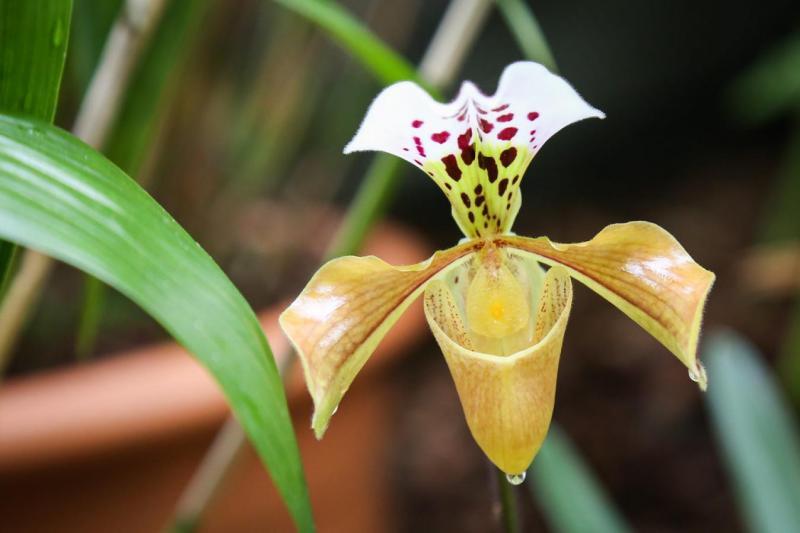Paphiopedilum gratrixianum
Also known as: Gratix's Paphiopedilum or Paphiopedilum gratrixianum var. cangyuanense Paphiopedilum gratrixianum var. christensonianum Paphiopedilum gratrixianum var. daoense Paphiopedilum gratrixianum var. gratrixianum Paphiopedilum gratrixianum var. guangdongense Paphiopedilum guangdongense Paphiopedilum gratrixianum h.v. doaense Paphiopedilum gratrixianum var. sulivongii Paphiopedilum villosum var. gratrixianum Cordula gratrixiana in the subfamily: Cypripedioideae
General Information
Gratix's Paphiopedilum is a small cool to warm growing epiphytic or terrestrial orchid belonging to the sub family Cypripedioideae. It is named after the English Orchid Enthusiast in the 1900's.
Plant Description
Grows to 30cm. Each new growth has numerous erect leaves that grow to 2-30cm long
Flowers
Numerous blossoms appear during Spring
Blooming Season
- Spring
Substrate(s)
- Coarse
Care Notes
These orchids like to be kept on the dry side, but may need to be watered daily during warm weather, and prefer a well draining mix or also do well mounted, provided they can be watered regularly.
These are quite a forgiving orchid, there are no special requirements to get this orchid to flower, just good care and consistent conditions. Larger plants may be more fussy and can react poorly to change; a poorly timed repotting, a pest infection or an unusually hot day can set them back for a couple of years. However, even plants that have been treated poorly can thrive, and if they are set back they often recover much stronger then they would otherwise be.
Climate
Grows at low to high elevations. Rainfall ranges from 3mm to 498mm per day, heaviest in August and lightest in January. Humidity ranges from 56% to 84%, highest in August and lowest in February. Temperature ranges from 11C to 28C, highest in April (18C to 28C) and lowest in January (11C to 23C).
Watering
These orchids are sensitive to excessive watering and should only be watered when they look thirsty. Water infrequently and ensure that the roots are dry before watering. Keep an eye on them especially during hot weather as overwatering can lead to rot, whereas underwatering may result in wilting or shriveling, which while unattractive, will not kill the plant.
Fertiliser
These orchids do not need to be regularly fertilised and roots may be sensitive to salt build-up, dying back and therefore impairing the plants growth or even killing it.
If fertilising, use half to quarter of the recommended amount of fertiliser. If they receive fertiliser as part of a collection, be sure to flush out the pots regularly with fresh water and monitor the roots by checking how much resistance is given by the plant when nudged in its pot or mount. If the plant becomes wobbly or loose, repot in fresh mix or rinse the media/mount thoroughly and do not fertilise for at least 3 months.
Be sure to flush out excess fertiliser by running water through the media regularly year round. Use a high Nitrogen fertiliser year round. Use a high Phosphorous fertiliser during Summer and Winter.Potting
These plants can be sensitive to repotting though should not require repotting regularly. Repotting should be done when the mix has broken down to the point that it doesn't absorb water or holds onto water for far too long, usually the plant shows a decline in growth as well.
The mix should be free draining, with a blend of 30% inorganic ingredients such as coarse sand, gravel or perlite, mixed in with about 70% organic ingredients such as peat, leaf litter or decomposed bark. Avoid commercial potting mixes as they can vary wildly and may contain "wetting agents" that can hold onto water for loo long, causing rotting and stunted growth.
Repotting is best done annually.




















